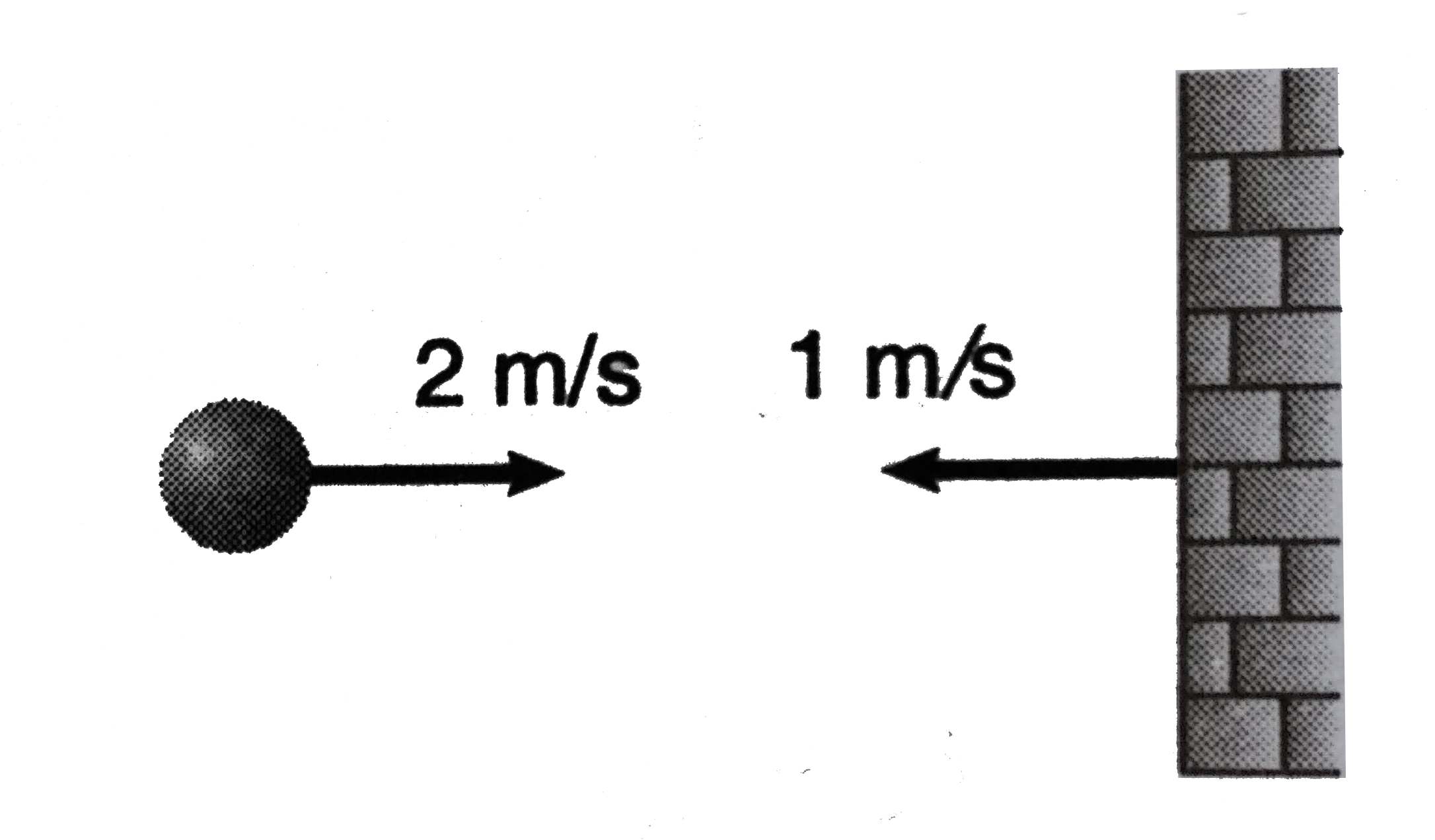The two balls shown in figure are identical the first moving at a speed v towards right and the second staying at rest. The wall at the extreme right is fixed. Assume all collisions to be elastic. Show that the speeds of the balls remain unchanged after all the collisions have taken place.

1st collision: As the balls have equal mass and make elastic collision, the velocities are interchanged.
Hence, after the first collision the ball A comes to rest andk the ball B moves towards right at a speed v.
2nd collision: The ball B moving with speed v collides with teh wall and rebounds. As teh wall is rigit and may be taken to be of infinite mass, momentum conservative gives no useful result. Velocity of seperation should be equal to the velocity of approach. Hence, teh ball rebounds at teh same speed v towards left.
3rd collision: The ball B moving towards let at the speed v again collides with the ball A kept at rest. As the masses are equal and teh collision is elastic, the velocities are interchanged. Thus, the ball B comes to rest and the ball A moves towrds let at a speed v. No further collision takes place. Thus, the speeds ofthe balls remain the same as their initial values.
Similar Questions
The two balls shown in figure are identical the first moving at a speed v towards right and the second staying at rest. The wall at the extreme right is fixed. Assume all collisions to be elastic. Show that the speeds of the balls remain unchanged after all the collisions have taken place.

View SolutionA ball of mass m moving with speed v towards the right strikes a wall moving towards the left with speed u. Find the change in the K.E. of the ball if the collision is elastic.
View Solution
Knowledge Check
A ball is moving with velocity 2m/s towards a heavy wall moving towards the ball with speed 1m/s as shown in figure. Assuming collision to be elastic, find the velocity of ball immediately after the collision.
 Av=4m/sBv=3m/sCv=0m/sDv=1m/s
Av=4m/sBv=3m/sCv=0m/sDv=1m/sA ball moving with speed v hits another identical ball at rest. The two balls stick together after collision. If specific heat of the material of the balls is S , the temperature rise resulting from the collision is
Av28sBv24SCv22SDv2SA ball moving with speed v hits another identical ball at rest. The two balls stick together after collision. If specific heat of the material of the balls is S , the temperature rise resulting from the collision is
Av28SBv24SCv22SDv2S
A ball moving with a speed of 9ms−1 strikes an identical ball such that after the collision the direction of each ball makes and angle 30∘ with the original line of motion. Find the speeds of the two balls after the collision.
View SolutionA particle of mass m is projected towards a wall such that theangle of incidence is θ and the speed just before collision is u. Assumming that the wall is smooth and the collision is elastic,show that the ball rebonunds at same angle.
View SolutionA ball moving with a velocity of 6 m/s strikes an identical stationary ball. After collision each ball moves at angle of 30∘ with the original line of motion. Assuming that the collision is elastic, what are the speeds of the balls after the collision?
View SolutionTwo identical balls each moving with speed v at right angle to each other collide perfectly inelastically. Their speed after collision is
View SolutionThe right block in figure moces at a speed V towards the left block placed in equilibrium. All the surfaces are smooth and all the collisions are elastic. Find the time period motion. Neglect the width of the blocks.

View Solution
